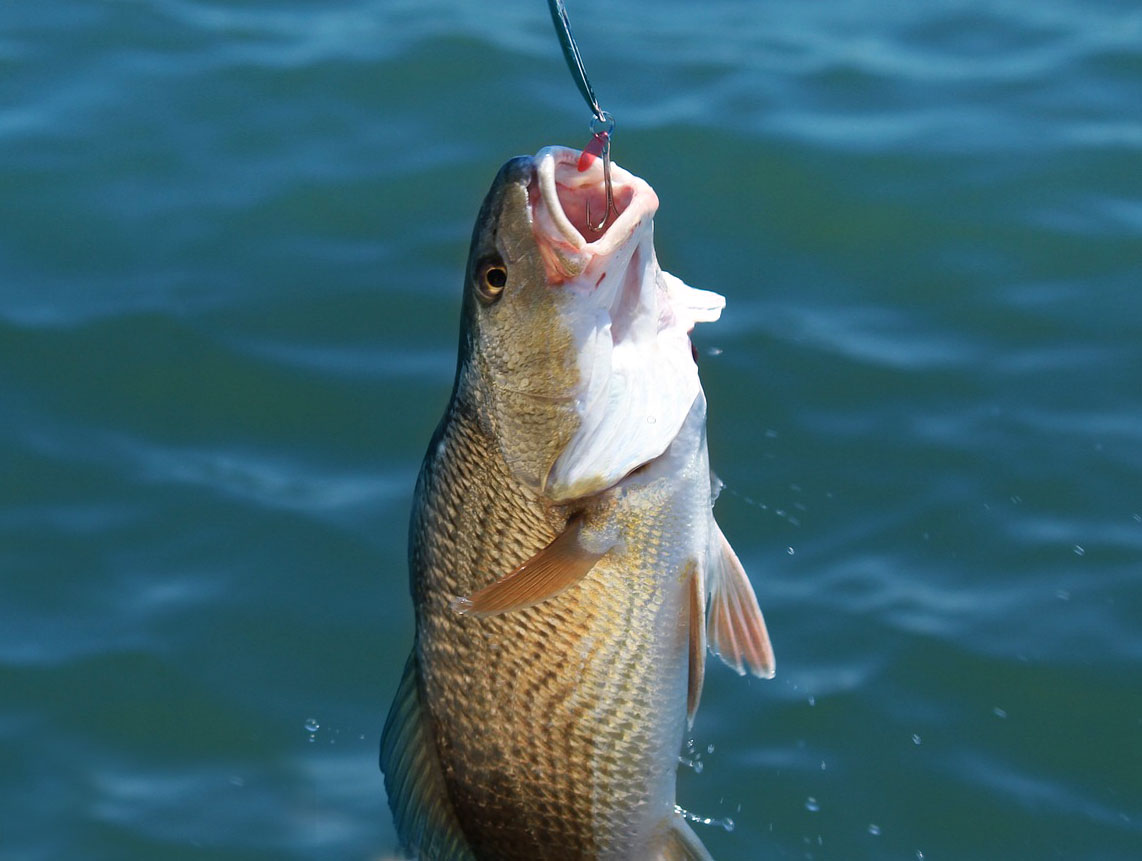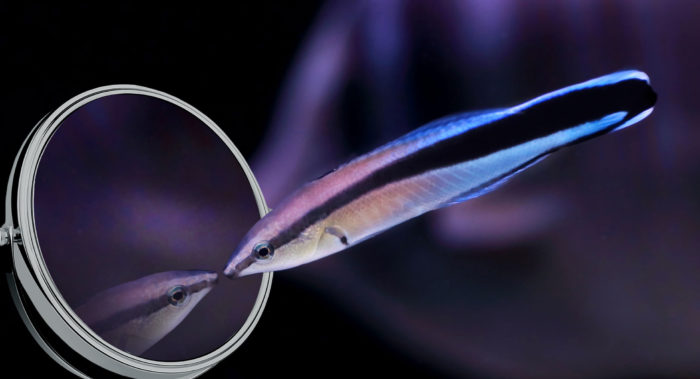Fish
Our oceans are home to countless, amazingly diverse beings. Fish can recognize other individuals, keep track of complex social relationships, and work cooperatively with other species.
Fish
Our oceans are home to countless, amazingly diverse beings. Fish can recognize other individuals, keep track of complex social relationships, and work cooperatively with other species.
As with other sentient animals, fish also feel pain, fear and stress. However, their differences to land animals can make it difficult for humans to readily empathise with aquatic species.
Today human demand for fish is devastating the seas with 90 percent of fisheries classified as overfished or fully exploited.
Scientists on the Future of Marine Animal Populations (FMAP) project reported that up to 90 percent of all large fish, such as cod, grouper, tuna, swordfish, marlin, sharks, and halibut have disappeared from the world’s oceans.
A study published in the journal Science predicted that if fishing rates continue unchanged, we could see the collapse of ocean fisheries by the year 2050.
And it’s not just the fish people eat who are harmed. Every year 38 million tonnes of by-catch (unintentionally caught fish and marine life, such as endangered turtles, sharks, and dolphins) are killed in the fishing industry. And a staggering 40% of global fishing catch is wasted.
A study published in the journal Science predicted that if fishing rates continue unchanged, we could see the collapse of ocean fisheries by the year 2050.
Fish Feel Pain
An important argument against eating sentient animals is that they have the capacity to feel pain. Land animals often react in ways that seem obvious they are experiencing discomfort, whether by loudly vocalising, biting or trying desperately to escape. However marine animals don’t necessarily react in ways that are familiar to us, which has lead many to assume they don’t experience pain as we do.
For people who are empathetic to animals it may seem obvious that fish feel pain. However for science to maintain its objectivity, experiments are a way to avoid anthropomorphism (the assumption that animals think, feel or behave as humans do) and provide a rational foundation for belief.
NOTE: We don’t condone inflicting pain or discomfort on animals for any reason and believe there are creative work-arounds for every situation; but we will refer here to some experiments that have been important in changing attitudes within the scientific community.
Until recently, there was much conjecture amongst marine biologists as to whether fish experienced pain. However there is now a majority consensus that fish can indeed feel pain and stress, and will actively avoid such situations.
In one study, a group of rainbow trout were given injections of acetic acid in their lips while a control group received ordinary saline injections.
The group of fish who received the acid injections breathed more rapidly, rocked back and forth at the bottom of their tank, rubbed their lips on the gravel and side of the tank, and took twice as long to resume feeding as the control group. The saline-injected group displayed none of these unusual behaviours.
In a further experiment, morphine was used to dull the pain of an acid injection. Morphine is known to dull the experience of pain but does nothing to cure the source of the pain itself. So when the fish’s behaviours returned to normal, it suggested the morphine was affecting their mental state; therefore the fish were not simply reacting to the acid in a mechanistic way.
Until recently, there was much conjecture amongst marine biologists as to whether fish experienced pain. However there is now a majority consensus that fish can indeed feel pain and stress, and will actively avoid such situations.
Fish Have Preferences
Lynne Sneddon is a University of Liverpool biologist and expert in the field of marine biology. She conducted an experiment wherein fish were given the option of two tanks to live in: one tank was barren and empty, while the other was enhanced with gravel, a plant and a view of other fish. The fish consistently chose to spend time in the enhanced tank.
However when the fish were injected with an acid, and pain-relieving lidocaine was added exclusively to the barren tank, they changed their preference to live in the barren tank.
The experiment was repeated, except instead of infusing the barren tank with the lidocaine, they injected the fish with it directly, thus endowing them with a portable supply of pain-relief. The fish returned to their preferred, more enhanced tank.
However when the fish were injected with an acid, and pain-relieving lidocaine was added exclusively to the barren tank, they changed their preference to live in the barren tank.
Are Fish Self-Aware?
A new experiment seems to imply that at least some species of fish can recognise they are looking at themselves in a mirror. The same experiment has previously successfully demonstrated that chimpanzees, elephants, magpies and dolphins can recognise their own reflection.
Researchers placed mirrors in the tanks of fish of the cleaner wrasse species and observed that initially some of the fish behaved as though another fish was in the tank. Over time however, the fish began to act strangely, swimming upside down or spreading their fins and quivering in front of the mirror.
The scientists then injected a coloured mark into the throats of the fish under anaesthesia. There was no change in their behaviour… until the mirrors were reintroduced into their tanks. Three out of four fish then seemed to pose in front of the mirror to get a better look at the mark and then began to scrape their face on the ground, presumably to try to remove the mark.
The test, known as the ‘mark test’, has been considered by many scientists to demonstrate self-awareness and cognition in other species. Some scientists now have difficulty accepting that the test implies self-awareness, presuming that fish intelligence should not be sophisticated enough to exhibit such complex behaviour.
It is not uncommon for researchers to ‘move the goalposts’ when results fail to align with their preconceptions about what a species may or may not be capable of.
There was no change in their behaviour… until the mirrors were reintroduced into their tanks…
above: An animation highlighting the plight of fish subjected to aquaculture
Fishless oceans – is that possible?
In a 2006 study published in the journal Science, researchers theorized that every species of wild-caught marine animals used for food would be virtually depleted by 2050, stating that 90% of the populations of each species would disappear due to sustained fishing.
The removal of such important participants in the marine environment on such a massive scale will naturally affect the remaining species, plant life and ocean in a drastic manner. The authors of the study believe the loss of these key species could have a flow-on effect and lead to the overall destruction of the ocean ecosystem.
The removal of such important participants in the marine environment on such a massive scale will naturally affect the remaining species, plant life and ocean in a drastic manner.
The Scourge of By-Catch
By-catch refers to fish and other marine animals who are unintentionally caught as a side-effect of commercial fishing. These include turtles, sharks and dolphins, who often become entangled in the vast fishing nets used by large-scale fishing operations.
Every year 38 million tonnes of by-catch marine animals are killed by the fishing industry.
And of the animals intentionally caught, a staggering 40% never even make it to people’s plates and become waste.
Every year 38 million tonnes of by-catch marine animals are killed by the fishing industry.
Simply reducing consumption is not the answer
As with all aspects of animal consumption, reducing is not sufficient:
- ‘Less’ suffering and death is not an acceptable trade-off. To every individual, regardless of species, their own life is precious. Would you be willing to sacrifice your own life for something as frivolous as someone enjoying how you tasted?
- The vast majority of humans do not live in an environment where eating animal products is the only option for survival.
- A healthy vegan diet can meet all nutritional needs at all ages.
- If reducing was the answer, who would be permitted to eat marine animals while others were not? The human population is so vast that it would not be feasible for everyone to continue to eat even a reduced amount and still make a sufficient impact to prevent the depletion of the oceans’ aquatic species



